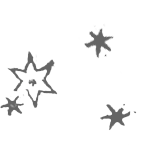Controversy over the Comets
Comets
Since antiquity, comets had posed an enigma. They appear without warning. They do not stay within the Zodiac like the planets. They come from different directions. Their speed and brightness change radically. Their tails always point away from the Sun. Parallax was observed for the Moon but not for comets, which implied that comets are farther away than the Moon, contrary to Aristotle’s argument that comets are fiery vapors in the upper atmosphere.
Browse Items on Display
| 0 |
The Hevelius Sextant |
|
| 1 |
Illustration and Description of the Incomparably Great Comet (1680) The great comet of 1680 illumines the sky above Nuremberg. One person among the onlooking crowd observes through a hand-held telescope. This was the first comet to be discovered by a telescope. Gottfried Kirch, a German astronomer, first saw it on November 14, 1680. |
|
| 2 |
On Comets Hevelius, Johann (1668) The frontispiece shows three views of the paths of comets: the Aristotelian theory that they consist of vapors beneath the Moon (left); Kepler’s theory that comets move in straight lines (right); and Hevelius’ view that they originate in the outer regions and descend in a parabolic trajectory... |
 |
| 3 |
The Climactic Year Hevelius, Johann (1685) In astrology, a “climactic year” marks a turning point, a moment of greatest risk. The preface explains that 1679 was Hevelius’ climactic year, for in that year his observatory burned. Fire destroyed manuscripts, books and instruments, including his sextant. He was 67 years old. |





